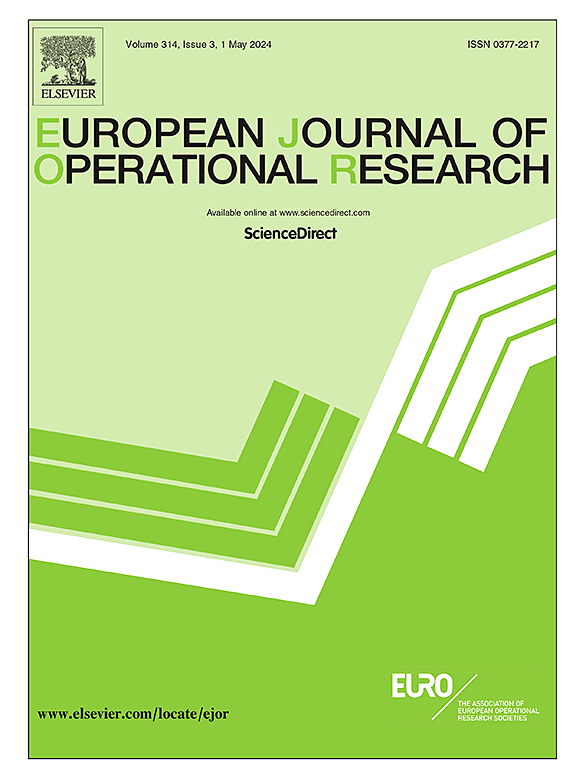The three-way decision model and multi-attribute decision-making: Methodological traps and challenges
IF 6
2区 管理学
Q1 OPERATIONS RESEARCH & MANAGEMENT SCIENCE
引用次数: 0
Abstract
The three-way decision (3WD) model has lately gained a lot of attention in data analysis and decision-making, and has even become a methodological framework that brings new insights into old problems. Our research is inspired by Bisht and Pal (2024) who introduced an innovative 3WD model which frames multi-attribute decision-making (MADM) problems. Considering both the loss and utility associated with various alternatives, they deduced the threshold values and directly integrated them to determine the final thresholds of 3WD. However, this approach does not fully address the precondition of the minimum expected cost or the maximum expected return inherent in the Bayesian decision procedure. In this paper, we would like to fill this research gap and discuss methodological aspects of establishing the decision thresholds of the 3WD model. Specifically, the experimental analysis demonstrates that the decision results generated by the decision model of Bisht and Pal (2024) may be inconsistent with the optimal decision results derived from the maximum expected return, thus potentially leading to conflicting outcomes. In the present paper, we address this problem and deduce more optimal expressions for the thresholds on the basis of the Bayesian decision procedure. In addition, through comparative experimental analysis, the rationality and effectiveness of the proposed threshold calculation method are verified. Finally, in the concrete derivation process, we also reveal the criteria for the existence of two-way decision, which makes our model applicable to more general situations.
三向决策模型与多属性决策:方法论的陷阱与挑战
三向决策(three-way decision, 3WD)模型近年来在数据分析和决策领域受到广泛关注,甚至成为一种对老问题提出新见解的方法论框架。我们的研究受到了Bisht和Pal(2024)的启发,他们引入了一个创新的3WD模型,该模型构建了多属性决策(MADM)问题。考虑到与各种替代方案相关的损失和效用,他们推导出阈值,并将它们直接整合,以确定3WD的最终阈值。然而,这种方法并没有完全解决贝叶斯决策过程中固有的最小预期成本或最大预期收益的前提条件。在本文中,我们希望填补这一研究空白,并讨论建立3WD模型的决策阈值的方法方面。具体而言,实验分析表明,由Bisht和Pal(2024)的决策模型生成的决策结果可能与由最大期望收益得出的最优决策结果不一致,从而可能导致结果冲突。在本文中,我们解决了这个问题,并在贝叶斯决策过程的基础上推导出更优的阈值表达式。此外,通过对比实验分析,验证了所提出的阈值计算方法的合理性和有效性。最后,在具体的推导过程中,我们还揭示了双向决策存在的准则,使我们的模型适用于更一般的情况。
本文章由计算机程序翻译,如有差异,请以英文原文为准。
求助全文
约1分钟内获得全文
求助全文
来源期刊

European Journal of Operational Research
管理科学-运筹学与管理科学
CiteScore
11.90
自引率
9.40%
发文量
786
审稿时长
8.2 months
期刊介绍:
The European Journal of Operational Research (EJOR) publishes high quality, original papers that contribute to the methodology of operational research (OR) and to the practice of decision making.
 求助内容:
求助内容: 应助结果提醒方式:
应助结果提醒方式:


